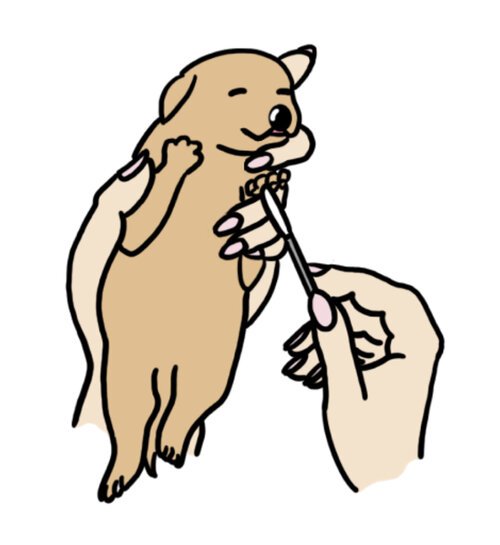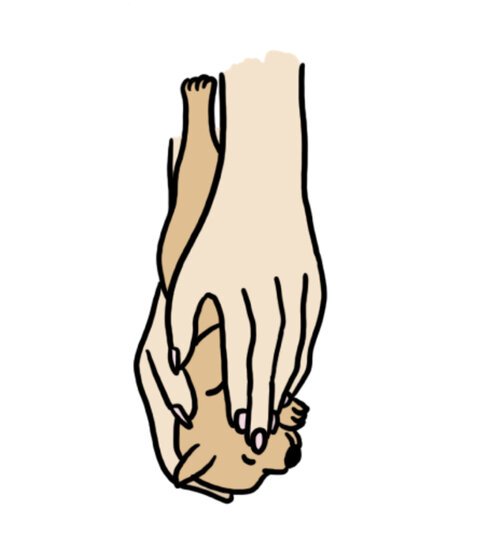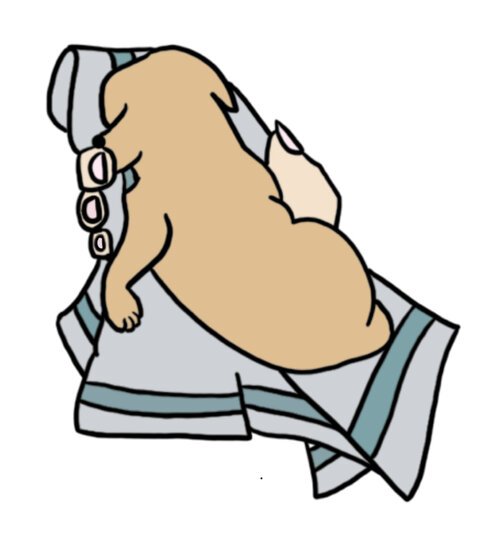Early Neurological Stimulation
What is early neuro stimulation?
Early Neuro Stimulation is a process that introduces mild stresses to very young puppies in a controlled way. These stresses help stimulate the neurological system which improves the growth and development of the pup's immune system, cardiovascular system, and stress tolerance.
Newborn pups are uniquely different from adults in several respects. When born, their eyes are closed and their digestive system has a limited capacity requiring periodic stimulation by their mother who routinely licks them in order to promote digestion. At this age they are only able to smell, suck, and crawl. Body temperature is maintained by snuggling close to their mother or by crawling into piles with other littermates. During these first few weeks of immobility, researchers noted that these immature and under-developed canines are sensitive to a restricted class of stimuli which includes thermal and tactile stimulation, motion and locomotion.
Studies show that removing them from their nest for three minutes each day during the first five to ten days of life causes body temperatures to fall below normal. This mild form of stress is sufficient to stimulate hormonal, adrenal and pituitary systems. When tested later as adults, these same animals were better able to withstand stress than littermates who were not exposed to the same early stress exercises. As adults, they responded to stress in "a graded" fashion, while their non-stressed littermates responded in an "all or nothing way."
Data shows that stress in small amounts can produce adults who respond maximally. On the other hand, the results gathered from non-stressed littermate show that they become easily exhausted and are near death if exposed to intense prolonged stress.
Sexual maturity was attained sooner in the littermates given early stress exercises. When tested for differences in health and disease, the stressed animals were found to be more resistant to certain forms of cancer and infectious diseases and could withstand terminal starvation and exposure to cold for longer periods than their non-stressed littermates.
Methods of Stimulation
The U.S. Military in their canine program developed a method that still serves as a guide to what works. In an effort to improve the performance of dogs used for military purposes, a program called "Bio Sensor" was developed. Later, it became known to the public as the "Super Dog" Program.
The "Bio Sensor" program was also concerned with early neurological stimulation in order to give the dog a superior advantage. Its development utilized five exercises which were designed to stimulate the neurological system. Each workout involved handling puppies once each day from day 3 to day 16 of the puppy’s life. The workouts required handling them one at a time while performing a series of five exercises. Listed in order of preference, the handler starts with one pup and stimulates it using each of the five exercises. The handler completes the series from beginning to end before starting with the next pup. The handling of each pup once per day involves the following exercises:
Tactical stimulation (between toes)
Head held erect
Head pointed down
Supine position
Thermal stimulation
Tactile stimulation - holding the pup in one hand, the handler gently stimulates (tickles) the pup between the toes on any one foot using a Q-tip. It is not necessary to see that the pup is feeling the tickle. Time of stimulation 3 - 5 seconds. (Figure 1)
Head held erect - using both hands, the pup is held perpendicular to the ground, (straight up), so that its head is directly above its tail. This is an upwards position. Time of stimulation 3 - 5 seconds. (Figure 2)
Head pointed down - holding the pup firmly with both hands the head is reversed and is pointed downward so that it is pointing towards the ground. Time of stimulation 3 - 5 seconds. (Figure 3)
Supine position - hold the pup so that its back is resting in the palm of both hands with its muzzle facing the ceiling. The pup while on its back is allowed to sleep. Time of stimulation 3-5 seconds. (Figure 4)
Thermal stimulation—use a damp towel that has been cooled in a refrigerator for at least five minutes. Place the pup on the towel, feet down. Do not restrain it from moving. Time of stimulation 3-5 seconds. (Figure 5)
These five exercises will produce neurological stimulations, none of which naturally occur during this early period of life. Experience shows that sometimes pups will resist these exercises, others will appear unconcerned. In either case a caution is offered to those who plan to use them. Do not repeat them more than once per day and do not extend the time beyond that recommended for each exercise. Over stimulation of the neurological system can have adverse and detrimental results. These exercises impact the neurological system by kicking it into action earlier than would be normally expected, the result being an increased capacity that later will help to make the difference in its performance. Those who play with their pups and routinely handle them should continue to do so because the neurological exercises are not substitutions for routine handling, play, socialization or bonding.
Benefits of Stimulation
Five benefits have been observed in canines that were exposed to the Bio Sensor stimulation exercises. The benefits noted were:
Improved cardio vascular performance (heart rate)
Stronger heart beats
Stronger adrenal glands
More tolerance to stress
Greater resistance to disease
In tests of learning, stimulated pups were found to be more active and were more exploratory than their non- stimulated littermates over which they were dominant in competitive situations.
Secondary effects were also noted regarding test performance. In simple problem solving tests using detours in a maze, the non-stimulated pups became extremely aroused, whined a great deal, and made many errors. Their stimulated littermates were less disturbed or upset by test conditions and when comparisons were made, the stimulated littermates were more calm in the test environment, made fewer errors and gave only an occasional distress sound when stressed.
Conclusion
Breeders can now take advantage of the information available to improve and enhance performance. Generally, genetics account for about 35% of the performance, but the remaining 65% (management, training, nutrition) can make the difference. In the management category, it has been shown that breeders should be guided by the rule that it is generally considered prudent to guard against under and over stimulation. Short of ignoring pups during their first two months of life, a conservative approach would be to expose them to children, people, toys and other animals on a regular basis. Handling and touching all parts of their anatomy is also a necessary part of their learning which can be started as early as the third day of life. Pups that are handled early and on a regular basis generally do not become hand-shy as adults.
Because of the risks involved in under-stimulation, a conservative approach to using the benefits of the three stages has been suggested based primarily on the works of Arskeusky, Kellogg, Yearkes and the "Bio Sensor" program (later known as the "Super Dog Program").
Both experience and research have dominated the beneficial effects that can be achieved via early neurological stimulation, socialization and enrichment experiences. Each has been used to improve performance and to explain the differences that occur between individuals, their trainability, health and potential. The cumulative effects of the three stages have been well documented. They best serve the interests of owners who seek high levels of performance when properly used. Each has a cumulative effect and contributes to the development and the potential for individual performance.




